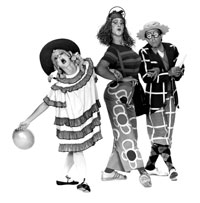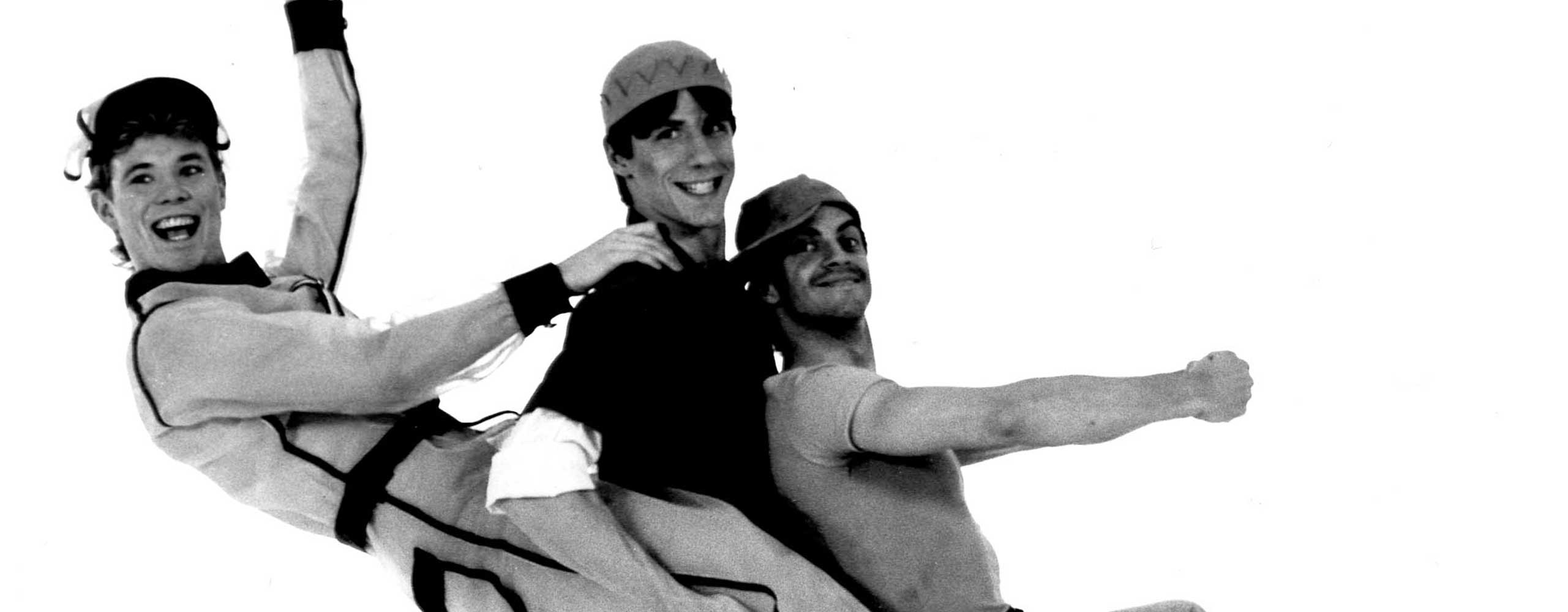
Choreography: Lew Christensen
Music: Virgil Thomson
Costume and set design: Paul Cadmus
Filling station, a comic classic of Americana in dance, lures us with its title to a recollection of other days, to the rosy innocence of America before World War II, when the amazing automobile suggested a world of grand possibility, and when the virtues of the frank and honest workmen were the virtues of the country.
The ballet was choreographed by Lew Christensen for Ballet Caravan and premiered in 1938. The conception was Lincoln Kirstein’s, the original score was Virgil Thomson’s, the costumes were by Paul Cadmus. It was one of the first ballets to use American music, scenery, costumes, and dancers.
Ballet Caravan, a small touring troupe had been founded in ’36 to reach into America with ballet, which until then had largely been viewed as a Russian, or at least foreign, hence suspect, art form. Kirstein, the company director, was determined to use American ideas and experiences in ballet and his determination resulted in scores of American ballets which though utilizing a classic vocabulary were, nonetheless, decidedly American. Of these pieces of Americana, Billy the Kid, Yankee Clipper, and Filling Station endure. Lynn Asinof, dance critic, writes of Ballet Caravan, it ” was a small troupe of diverse talent operating on a shoestring budget…. it did provide important continuity in the dancers’ professional experience and helped establish small, simply-mounted ballets as a valid dance form. ‘The Caravan’ gave choreographers like Lew Christensen, Eugene Loring, and William Dollar, their first opportunities, and the resulting ballets pioneered the use of American themes.” A member of this hardy ban, Todd Bolender, created the original role of the State Trooper in Filling Station.
Filling Station, a witty narrative of comic-strip characters, behaving in a stereotypical comic-strip manner presages the pop modernism of the ’60’s and comments obliquely on such folk heroes as those of ” Gasoline Alley.” Mac, the attendant, whose opening variation introduces us to his world, is a steady reliable fellow, tough, athletic, and finally even heroic. His station is haven, compass, entertainment. His customers’ needs are various and predictable and the mood is ballet, the male variation, a slightly askew pas de deux, a theatrical production number for the ensemble, a finale resolution. The sharp, cleanly-wrought characterizations hold the comic-strip imagery and we are caught up in a once-upon-a-time celebration of America.
Composer Virgil Thomson was born in Kansas City in 1896. His rich and inventive score for Filling Station was commissioned for the ballet and is a significant part of the work. The ballet is the product of the extraordinary collaborative quartet of Thomson, Kirstein, Christensen and Cadmus. The costumes and set are copies of the Paul Cadmus originals and are on loan from the San Francisco Ballet.
